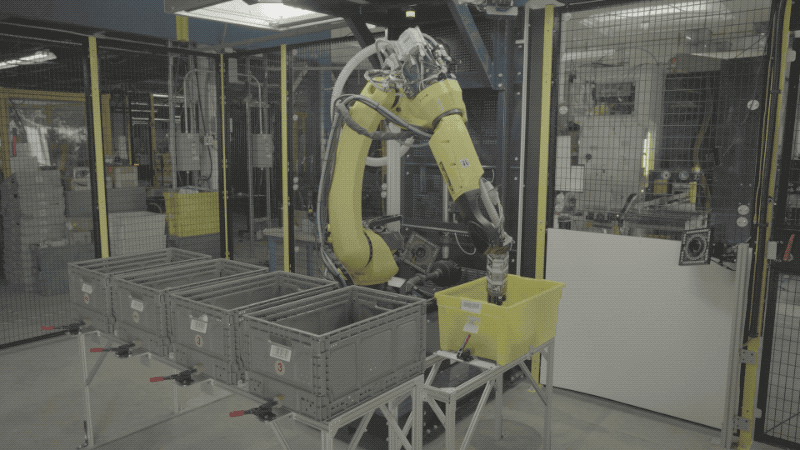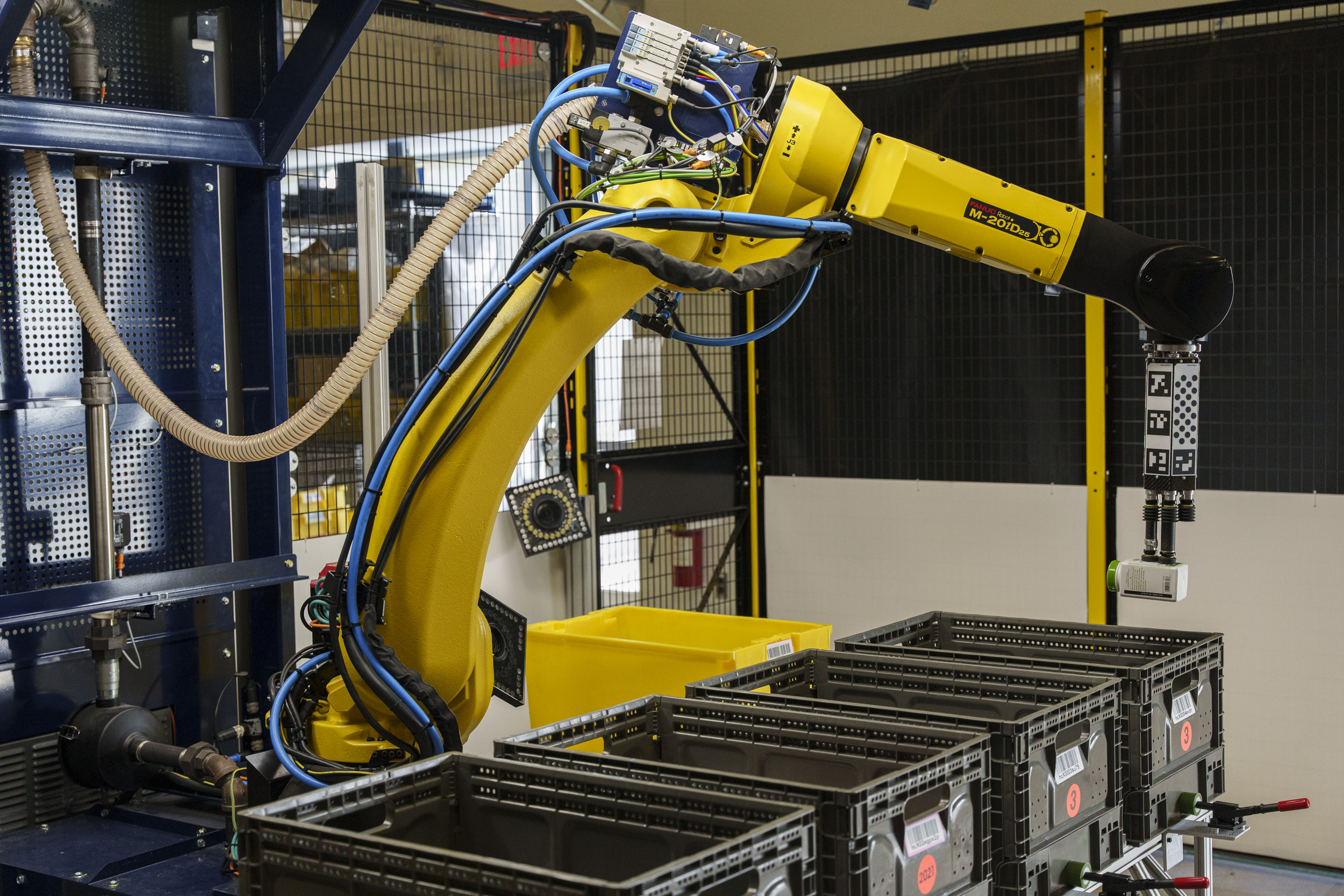The bin moving robots designed by Kiva Systems still form the foundation of Amazon’s warehouse robotics play a decade after it acquired the startup. There’s a reason — for example — that the recently announced fully autonomous Proteus robot effectively looks like a green (“Seahawks green,” per robotics VP, Joseph Quinlivan) version of one of those systems. Over the years, the retail giant has broadened the scope of its warehouse ‘bots – hundreds of thousands of them now occupy fulfillment centers across the U.S.

Image Credits: Brian Heater
As one might imagine, robot arms are a big piece of that puzzle. Robin (which debuted 18 months ago) and Cardinal (which rolls out this year) are the two most prominent examples, both designed to move packages and send them on their way inside the warehouse. Cardinal is effectively an update to Robin that’s able to pack boxes full of packages. There are currently around 1,000 Robin units deployed in Amazon warehouses.
At an event held in its Westborough, Massachusetts robotics center (about 40 minutes from downtown Boston), the company added a third bird into the mix: Sparrow.

Image Credits: Amazon
The new arm is a more sophisticated take on the company’s existing robotic arms, adding the ability to pick and place specific objects in bins. The arm’s computer vision and AI are capable of identifying and move “millions” of items, according to the company.
Amazon writes,
Working with our employees, Sparrow will take on repetitive tasks, enabling our employees to focus their time and energy on other things, while also advancing safety. At the same time, Sparrow will help us drive efficiency by automating a critical part of our fulfillment process so we can continue to deliver for customers.
The company is, of course, quick to point out that Sparrow (along with its other robots) is designed to replace repetitive tasks – and, perhaps, save a few human backs in the process. It’s understandably become common practice to get out ahead of the standard criticism of companies automating away jobs, but pointing out that these systems,
1. Have the ability to actually create more jobs in the long run and
2. Those are “better” jobs than the standard warehouse fare.

Image Credits: Amazon
Per the second, Amazon attached a note about its employee education programs in the Sparrow blog post, noting,
An example of our commitment to advancing employee careers is our Amazon Mechatronic and Robotics Apprenticeship. A 12-week classroom apprentice program covered by Amazon that is followed by 2,000 hours of on-the-job training and industry-recognized certifications, helping our employees learn new skills and pursue in-demand, technical maintenance roles. Following completion of the apprenticeship, employee pay increases by approximately 40% for program participants.
Amazon debuts Sparrow, a new bin picking robot arm by Brian Heater originally published on TechCrunch















 English (US) ·
English (US) ·